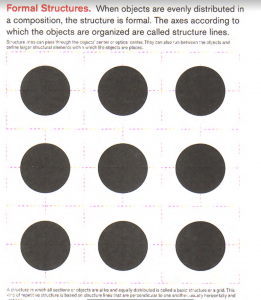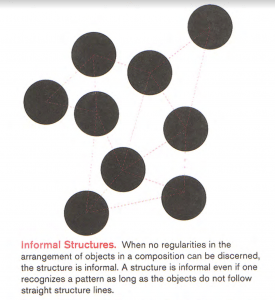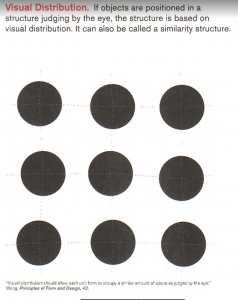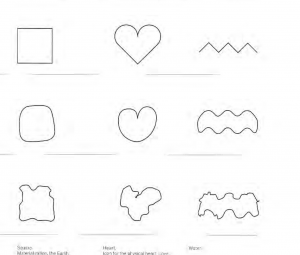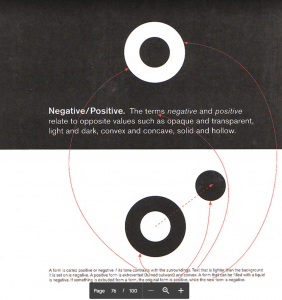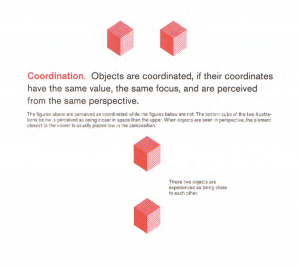I wanted to read a book that would help me in all projects this semester, as most of them require visual illustration or creative visuals I though that this book ‘Visual Grammar’ by Christian Leborg would be a good starting point. Within both areas – IXD103 and 104 I am exploring shape. For example, my branding project, I am creating icons from shapes for my visual mark. This requires me to look deeper into all shapes like circles and see how I can make a circle create all icons. This is tricky so I felt like reading this book helped me to understand visual grammar and how I can use shapes, lines and spaces to my advantage when designing.
The book is about two main areas:
- Abstract
- Concrete
Both subjects are divided up into chapters, devaluing deeper into the world of all things abstract and concrete, there are so many images of shapes throughout this book, with every definition there is a relevant image or shape displaying what is implied.
The first section was on abstract objects, for example point, line, surface, volume, and format etc. This was like a recap from first semester when we learned about these elements of design from Paul. The term itself was described, Abstract Objects – Abstract objects are ideal shapes that cannot be physically created. When you try to draw a point for example, you do not end up with a point but a surface. I thought this was interesting and I wasn’t actually aware of this definition, so it was nice to know this for the future. It was a nice refresher to see all these elements and their definitions and included diagrams/images, this was easy to understand and helped me to have a better understanding of each one.
Reading through the chapter summaries I wanted to look at one main title – Abstract structures. I wanted to zoom in on structures because I am designing structures for my brand – icons from shapes. So, I thought this chapter would help me the most.
What is an Abstract structure?
Placing objects in relation to one another will establish a structure. We can only describe a structure if we are able to recognise its pattern. A structure that does not have a visible structure line is called abstract.
All of the images above interested me because the shape I chose to make icons with was circles and some of my structures look like this. It was nice to read the definitions and understand what different structures were, I didn’t know that all of these structures have names, for example informal and formal structures.
Another part of this book that interested me was Concrete Objects:
 This section allowed me to exmplore form and all the different types of form there is in design, for example:
This section allowed me to exmplore form and all the different types of form there is in design, for example:
- Geometric forms
- Organic forms
- Random forms
The image above shows the forms in action and it is easily comprehended. The next image, below, shows these forms in other shapes that are well known, for me it was interesting to see how the geometric form slowly sort of melted into the random form. Further highlighting how straight lines can affect the overall look of a shape.
‘Objects are perceived within defined limits. These lints are called contour lines. The contour is what defines the shape, or the form’.
There were so many other elements of visual grammar showed in this book. The author went into so much detail on every single form of visual grammar, for example the whole book in my opinion is a visual dictionary of terms on abstract and concrete concepts. Here are some other images and description I really liked, not only for the image but also the term.
Not only was this book extremely informative but in my opinion beau are of the contents it was very easily read. There wasn’t copious amounts of information and paragraphs to sift through. It was straight to the point and Leborg did a great job of displaying the terms and topics and describing them, so everyone can understand them
What did I learn?
I learned a lot from this book but my main takes from it were these:
- There are three different types of form
- Objects are defined with contours
- Without an interaction (balance) between elements, a composition is static and not dynamic
- Inactive structures (invisible structures) are used in design all the time
Overall, this book has help me understand terms I didn’t know or hadn’t heard from and now I can use in my development for my icons for my brand. Not only were then visuals very helpful and informative, but also were a great way to help me to understand the importance of visual grammar in design because all of these elements are needed in some way for a successful design.
Leborg finished with this quote on the back of the novel ” without a basic understanding of visual language a productive dialog between producers and consumers of visual communication is impossible” I really liked this because it sums up the need for the book and also explains why understanding visual grammar and using shapes, space and line etc is so important in design.



